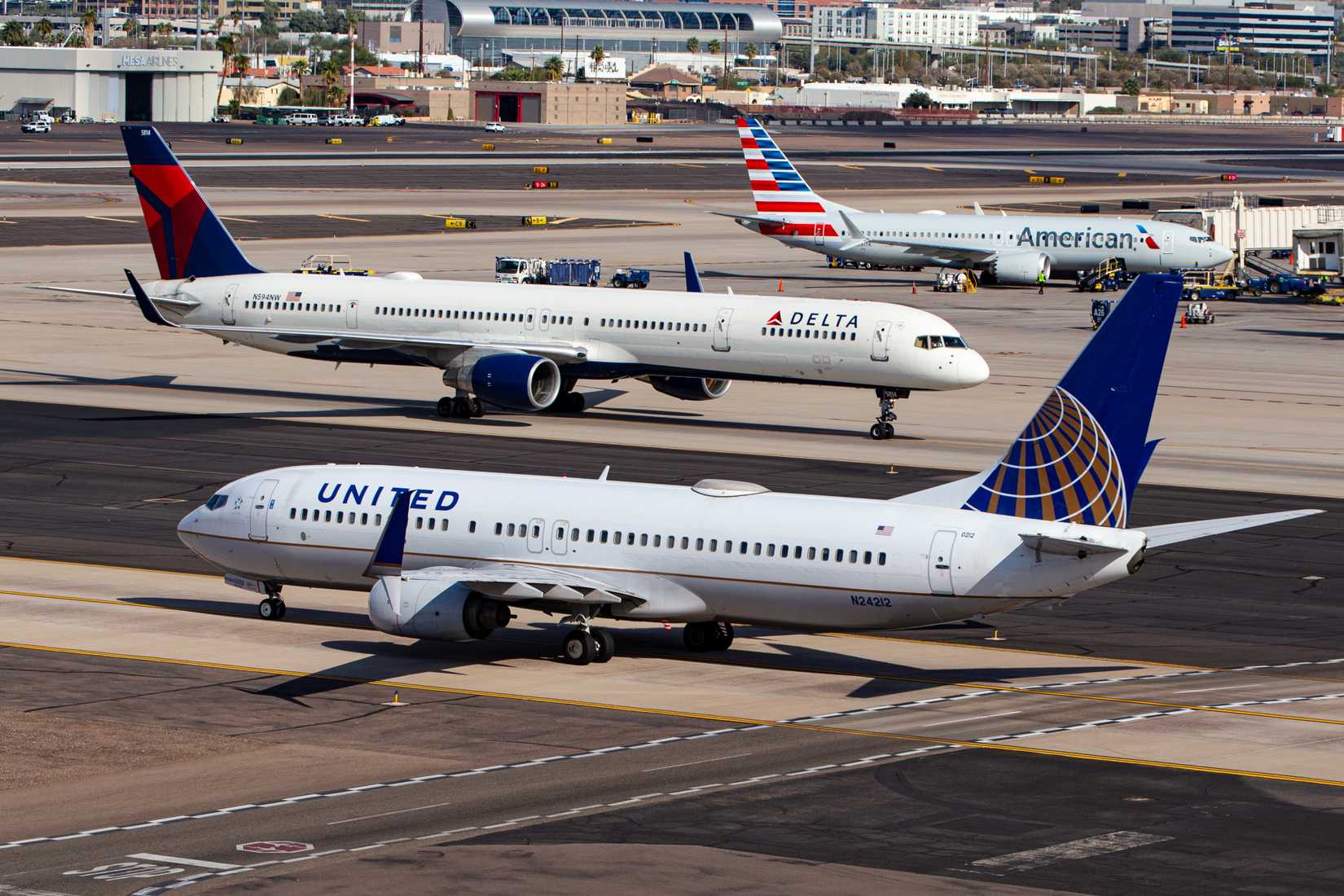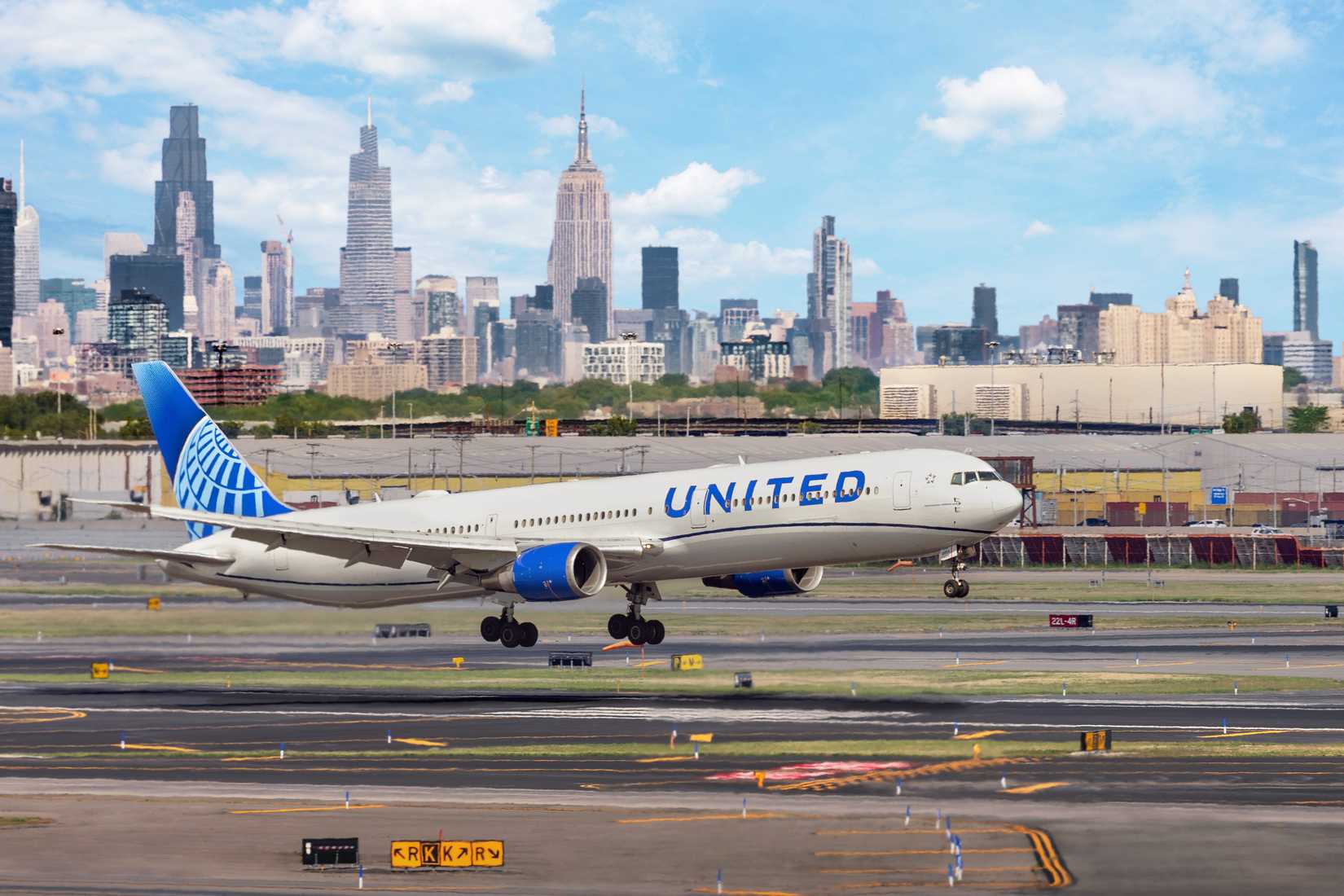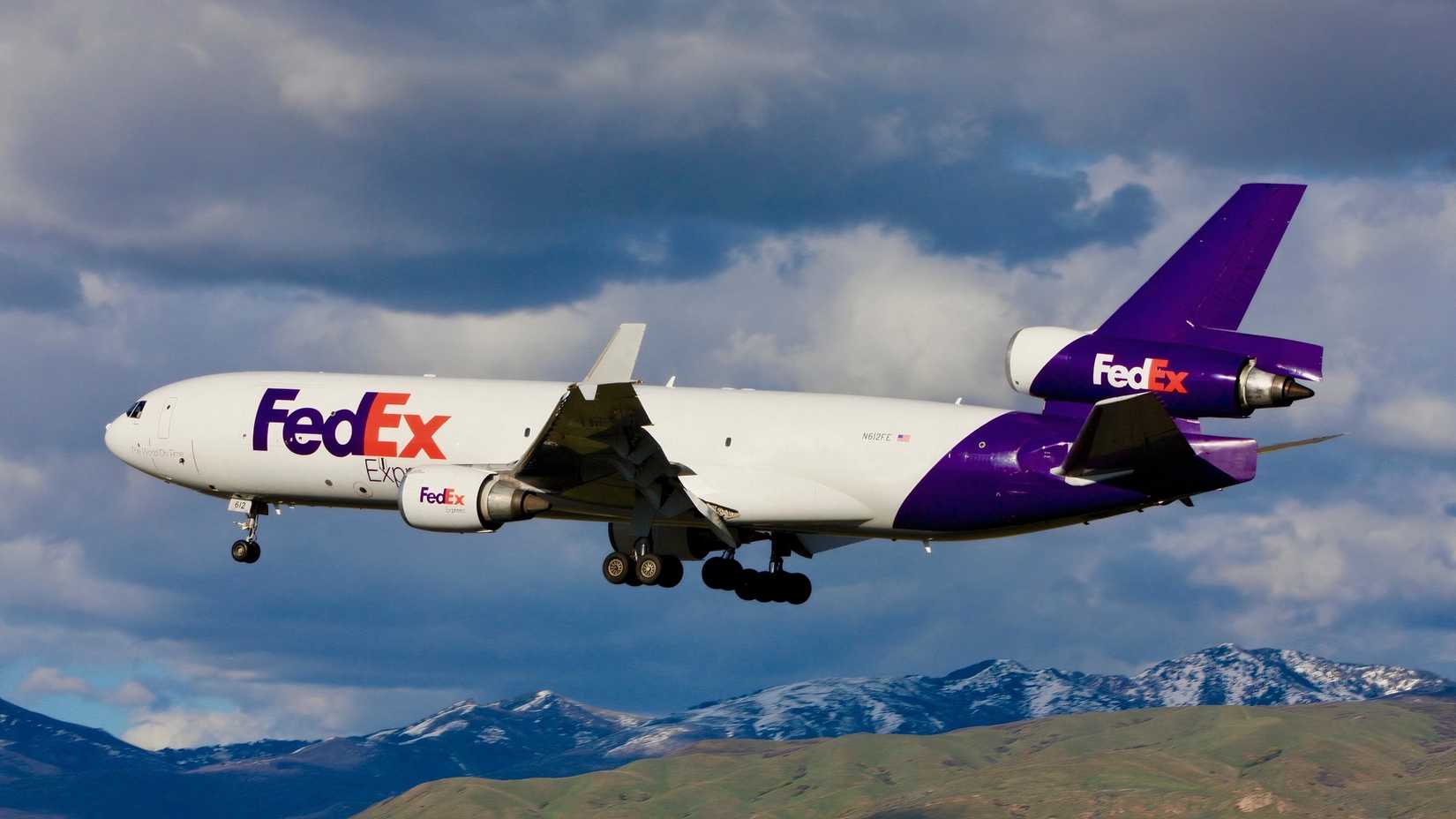When boarding a flight in the United States, many travelers are surprised to learn that the jet whisking them across the country and abroad might be older than they are. It’s not uncommon for aircraft in the fleets of ![]() American Airlines,
American Airlines, ![]() Delta Air Lines, or
Delta Air Lines, or ![]() United Airlines to have rolled off assembly lines in the early 1990s or even the late 1980s. This raises an important question: Why do US airlines continue to operate aircraft well into their 30s?
United Airlines to have rolled off assembly lines in the early 1990s or even the late 1980s. This raises an important question: Why do US airlines continue to operate aircraft well into their 30s?
The answer reveals a fascinating intersection of economics, engineering, and trust. While “old” airplanes might sound unsafe to the average passenger, the reality is far more nuanced. Modern maintenance practices, rigorous FAA oversight, and robust engineering ensure that aircraft remain airworthy for decades. This article explores how that’s possible by examining the oldest jets still flying in major US fleets, and what it really takes to keep them soaring safely after 30 years.
Decades-old Jets In American Skies
Aircraft age doesn’t determine safety, but maintenance does. According to Source One Spares, most commercial aircraft are designed to operate for 25–30 years or longer when properly maintained. Airlines keep older aircraft flying because it’s cost-effective, environmentally responsible, and technically feasible to do so. With modern refurbishments and inspections, a 30-year-old Boeing 757 can be just as safe as a 10-year-old Airbus A321.
At first glance, it may seem surprising that some of the world’s biggest airlines – American, Delta, and United – operate some of the world’s oldest commercial fleets.
According to data from Planespotters.net (from September 2025), here are some of the oldest aircraft still flying with three major US airlines:
In fact, both Delta’s and United’s average fleet age hovers around 15 years, compared with a slightly younger 14 years for American; however, within those averages lie dozens of aircraft that are more than three decades old.
These aircraft continue to fly thousands of passengers daily, demonstrating the durability and serviceability of airliners when maintained under the watchful eye of FAA-certified technicians.
The Long Life Of An Airliner: What Factors Make Longevity Possible?
Aircraft don’t “age” in calendar years alone. Instead, engineers and regulators measure an airframe’s life in pressurization cycles, meaning that each takeoff, climb, descent, and landing counts as one cycle. Every cycle places stress on the fuselage and wings, creating what engineers refer to as metal fatigue.
According to Source One Spares, short-haul aircraft (like the Airbus A320 or Boeing 737) experience many more cycles than long-haul jets, which fly fewer but longer missions. This means a 20-year-old Boeing 737 might have endured more stress than a 30-year-old Boeing 767 that spends its life on transatlantic routes.
“On average, a plane can fly for 30 years before it needs to be retired,” writes aviation expert Vance Hilderman for Source One Spares. “Every flight adds a pressurization cycle, and short-haul planes will typically wear out sooner than widebodies.”
Sample Maintenance Cycle Chart
|
Check Type |
Frequency |
Work Performed |
|---|---|---|
|
A-Check |
Every 400–800 flight hours |
Basic systems inspection |
|
C-Check |
Every 20–24 months |
Structural and avionics checks |
|
D-Check |
Every 6–10 years |
Full airframe teardown and rebuild |
Source: Simple Flying
In practice, many airliners exceed that benchmark. Through structural inspections, component overhauls, and system upgrades, airlines can safely extend an aircraft’s life well beyond its original design goals.
So, keeping a 30-year-old aircraft in the sky isn’t just about patching it up, but it’s more about continuous renewal. Here is the list of several factors that make this viable for major US carriers:
- Design and Manufacturing Quality – Boeing and Airbus design airframes with “fail-safe” and “damage-tolerant” structures, meaning any single crack or fatigue point won’t compromise the aircraft’s integrity.
- Maintenance and Overhaul Routines – Airlines conduct D-checks every 6–10 years, completely disassembling the jet for deep inspection and refurbishment.
- Operational Patterns – Widebody aircraft flying fewer, longer missions accumulate fewer cycles and therefore age more slowly.
- Economic Considerations – The cost of replacing a widebody like a 767 or 777 can exceed $200 million, making refurbishment far more appealing.
With this level of scrutiny, even aging aircraft can operate as if new.
Expert Opinion
Industry experts agree that age alone isn’t a safety concern. As InsiJets explains, “Aircraft age is not a safety concern. More important than an aircraft’s age is its maintenance history.” Older jets, when maintained according to manufacturer and FAA standards, can safely operate for decades.
That said, InsiJets also notes that older aircraft “may cause inconveniences such as overheating or faulty air conditioning,” highlighting comfort rather than safety as the main issue for passengers. Airlines often refurbish interiors, install new in-flight entertainment systems, and upgrade flight decks with modern avionics, turning a 1990s aircraft into something that feels almost brand new inside.
“Over time, every part of the plane will be replaced with a new part,” InsiJets adds. “However, older aircraft still have more operational issues, such as faults with heating and plumbing.”
For airlines, the key is to strike a balance between cost, reliability, and passenger perception. Most passengers wouldn’t know the age of the plane they’re flying unless they checked the registration number, and that’s exactly how the airlines like it.
Comparing The US Giants With The Rest Of The World
The idea of keeping airliners flying past their 30th birthday isn’t unique to the US. Around the world, many respected carriers operate older aircraft safely and efficiently, thanks to rigorous maintenance, stringent regulatory oversight, and ongoing upgrades.
For example, across the Atlantic, ![]() Lufthansa proves the same principle on the international stage. According to data from Simple Flying and Flightradar24, the German flag carrier’s oldest active passenger aircraft is D-AIRH, an Airbus A321-131 built in July 1993, which is now over 31 years old. Several sister A321-100s from 1994 also remain in daily operation across Europe. The airline’s recent retirement of its oldest A320-200, D-AIQS, after 32 years of service, illustrates the reliability of the early Airbus narrowbody generation. Lufthansa’s maintenance arm, Lufthansa Technik, emphasizes that “the structural health of an aircraft is determined by inspections and parts replacements, not the calendar.”
Lufthansa proves the same principle on the international stage. According to data from Simple Flying and Flightradar24, the German flag carrier’s oldest active passenger aircraft is D-AIRH, an Airbus A321-131 built in July 1993, which is now over 31 years old. Several sister A321-100s from 1994 also remain in daily operation across Europe. The airline’s recent retirement of its oldest A320-200, D-AIQS, after 32 years of service, illustrates the reliability of the early Airbus narrowbody generation. Lufthansa’s maintenance arm, Lufthansa Technik, emphasizes that “the structural health of an aircraft is determined by inspections and parts replacements, not the calendar.”
Even as Lufthansa invests heavily in new Airbus A350s and Boeing 787s, the continued service of its early A321s and A340s demonstrates that the airline’s fleet philosophy strikes a balance between renewal and long-term value. The average fleet age of the Lufthansa Group is around 14 years, but its engineers maintain several airframes comfortably beyond 30 years in full compliance with European Union Aviation Safety Agency (EASA) standards, as reported in the Lufthansa Group’s Annual Report for 2024.
In Canada, Air Transat stood out for its long-serving Airbus A310s, which were built in the late 80s and early 90s. These aircraft flew for over three decades before being retired in 2020, logging about 30 years of international service. Another prominent user of “vintage” commercial aircraft is also from Canada: Nolinor Aviation, which is known for its Arctic operations of the Boeing 737-200, with an average age of 45 years.
The same principle keeps the world’s cargo airlines flying older fleets safely. FedEx and UPS Airlines both operate McDonnell Douglas MD-11Fs and Boeing 757/767 freighters, which were built in the late 1980s and early 1990s. Typically, cargo aircraft undergo fewer takeoff and landing cycles than passenger jets, which slows fatigue and makes 30-year-old freighters economically viable. InsiJets notes that cargo operations “exert less cyclic stress on airframes, extending usable lifespan well beyond that of passenger aircraft.”
These examples underscore that age alone tells us very little about an airplane’s health or safety. Whether flying for Delta, Lufthansa, or FedEx, an aircraft that has been well maintained, regularly inspected, and technologically refreshed remains every bit as trustworthy as a new one.
The Risks And Drawbacks
Despite the engineering marvels behind these aging fleets, older aircraft come with trade-offs. Source One Spares points out that metal fatigue, corrosion, and component obsolescence become increasing concerns over time. For example, when Aloha Airlines Flight 243 suffered explosive decompression in 1988, the 19-year-old Boeing 737-200 had accumulated nearly 90,000 flight cycles – far above typical usage.
Modern regulations prevent similar incidents today. The FAA mandates detailed inspections for “widespread fatigue damage” (WFD) and corrosion, and requires component replacements at strict intervals.
The pandemic also reshaped how airlines handle older jets. Many were retired early, especially inefficient models like the Boeing 757 and 767. However, others saw their service lives extended due to reduced utilization during the 2020–2021 period. Essentially, the grounding and fewer takeoffs during the pandemic led to an extension of some aircraft’s service life.
Average Service Life by Type
|
Aircraft Model |
Typical Lifespan (Years) |
Typical Flight Cycles |
|---|---|---|
|
Boeing 737 / Airbus A320 |
20–25 |
60,000–75,000 |
|
Boeing 767 / 777 |
25–30 |
20,000–30,000 |
|
Regional Jets |
15–20 |
40,000–60,000 |
|
Turboprops |
20–30 |
30,000–50,000 |
Still, operating an older fleet incurs higher fuel and maintenance costs, as well as a greater likelihood of unscheduled repairs. The trade-off often favors longevity only when fuel prices are moderate and new aircraft deliveries are delayed: conditions that have characterized much of the post-pandemic recovery period.
The Takeaway: Engineering Endurance
So, why do US airlines operate aircraft well into their 30s? Because modern airliners are built and maintained to last. An aircraft’s safety is determined by maintenance history, not its birthday. A 1991 Boeing 767 that’s undergone multiple D-checks, avionics upgrades, and cabin refurbishments is no more inherently dangerous than a newer model.
“Aircraft are entrusted with the precious cargo of hundreds of lives,” writes Vance Hilderman in Source One Spares. “Their safety and reliability need to be beyond question.”
That philosophy drives the US aviation system, where strict oversight, experienced technicians, and data-driven maintenance ensure even the oldest aircraft meet or exceed today’s standards.
As the next generation of jets, such as the Airbus A321XLR and Boeing 787, take over more routes, the era of the 1980s-built Boeing 757 is slowly fading. But for now, those classic jets remain vital workhorses, which is proof that in aviation, age isn’t obsolescence, it’s endurance.








